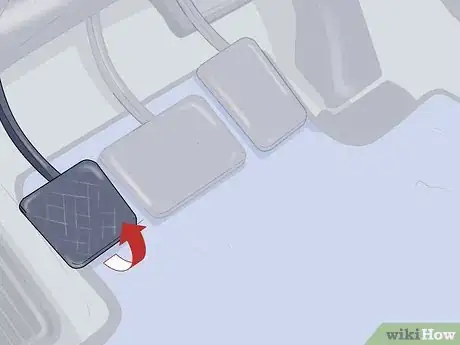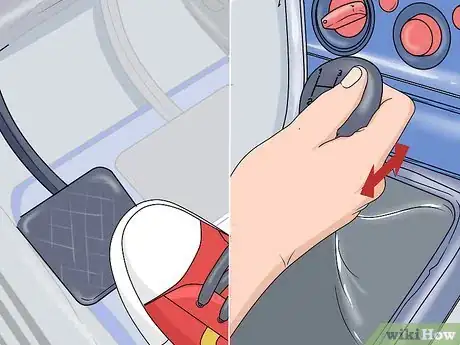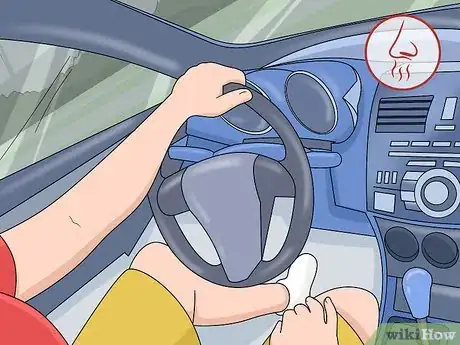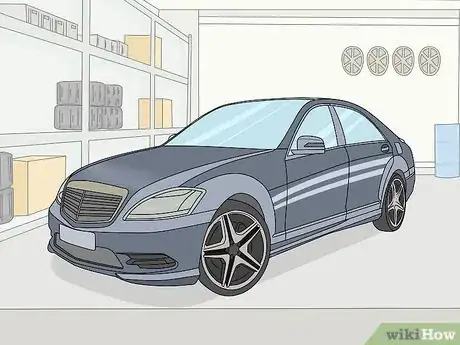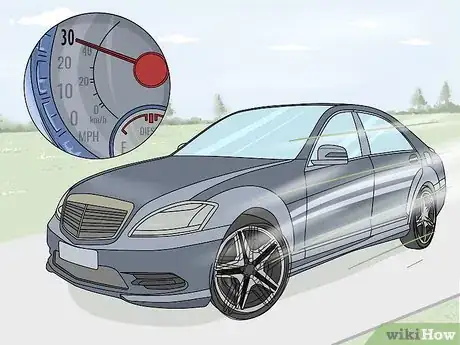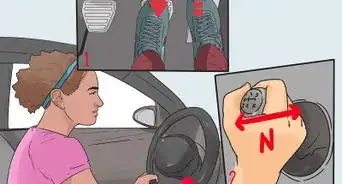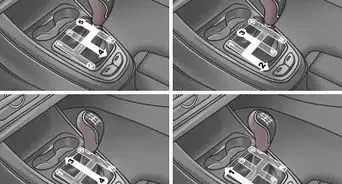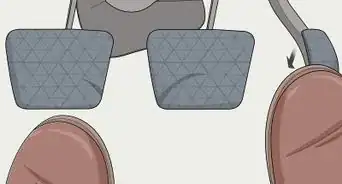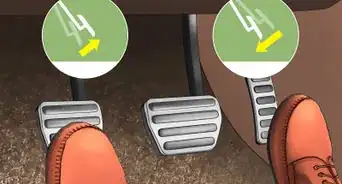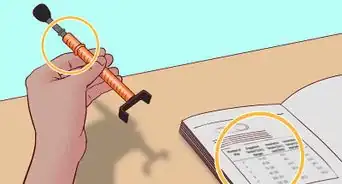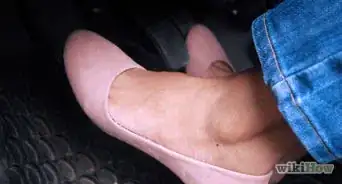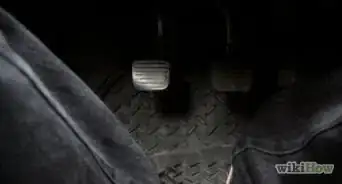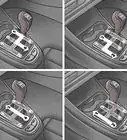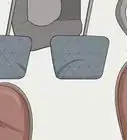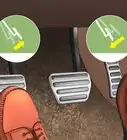This article was co-authored by wikiHow Staff. Our trained team of editors and researchers validate articles for accuracy and comprehensiveness. wikiHow's Content Management Team carefully monitors the work from our editorial staff to ensure that each article is backed by trusted research and meets our high quality standards.
There are 8 references cited in this article, which can be found at the bottom of the page.
This article has been viewed 47,488 times.
Learn more...
On manual transmission cars, the clutch pedal often wears out over time, which is a common problem on used cars. Replacing the clutch is an expensive process that requires taking out the whole transmission, so you’d definitely want to avoid buying a car with a worn-out or slipping clutch. Luckily, there are several simple tests you can perform on the car, both when it’s running and when it’s off, that can reveal any clutch problems. Always do these tests on a manual transmission car you’re considering to avoid running into problems down the road.
Steps
Feeling the Pedal with the Car Off
-
1Press the clutch with the car off to see if it feels firm. Sit in the driver’s seat with the car off and press the clutch. The clutch shouldn’t be too easy to press down. Pump it back and forth to test its resistance level. If it feels soft and spongy, then this is an early sign that the clutch is starting to wear out.[1]
- Another test is trying to press the clutch with one finger. This should be difficult. If you can easily move the clutch with your finger, then it’s too loose.
- While the clutch should be firm, it shouldn’t be immovable or overly stiff. This is another sign of trouble.
-
2Depress the pedal completely to test how fast it comes back up. Press the clutch as far down as you can and take your foot off. It should come back up to its starting position quickly. However, if it gets stuck or comes up slowly, then it’s starting to wear out.[2]
- You should also feel even resistance in the pedal as you press it down. If it feels bouncy or uneven, this is also a sign of wearing.
Advertisement -
3Listen for abnormal noises while pumping the clutch. While the clutch shouldn’t be completely silent while you press it, it shouldn’t make a lot of noise either. Pump the clutch and listen for squeaking, grinding, clanking, or any other noticeable noises. These noises could indicate a problem with the clutch.[3]
- These noises might not be coming from the clutch itself. You could also be hearing transmission noises. Either way, excessive noise in a car is never a good sign, no matter where it comes from.
-
4Make sure shifting into gear feels easy. If the clutch is worn-out, shifting will be more difficult. With the car off, press the clutch and try to move the gearshift. It should feel smooth and be easy to find a gear. If you have to press hard or have trouble engaging a gear, then the clutch could be worn out.[4]
Checking the Shift Performance
-
1Turn the car on and engage the parking brake. This is a simple test to see if the clutch is slipping. Start by turning the car on and engaging the parking brake. Don’t shift into gear yet.[5]
- Make sure the parking brake works before you try this test. Do it in an open area for more safety.
-
2Check for a burning smell in the car after you start it. A worn-out clutch can grind the transmission, which creates a burning smell. Let the car run for a minute and see if you notice any burning smells. This could be from an old clutch or another issue with the car.[6]
- A burning smell could indicate several other problems besides a worn-out clutch. If you’re inspecting a used car and smell anything suspicious, you should reconsider buying it or have a mechanic look over it.
-
3Shift right into 3rd gear. This tests the car for a slipping clutch. Press the clutch down and move the gearshift to 3rd gear. Don’t give the engine any gas or release the clutch yet.[7]
- If you have trouble moving the gearshift while you’re trying to shift, then this is a problem too.
-
4Release the clutch and see if the engine stalls. A functioning clutch won’t let you start in a high gear, so the car should stall if you try to do this. If you release the clutch and the car stalls, then this is a good sign. If you release it and the car doesn’t stall, then the clutch it probably slipping.[8]
- If the car doesn’t stall right away, try giving it a little gas. If it stalls after this, then the clutch is starting to go bad. If it still doesn’t stall, then the clutch needs to be replaced right away.
Test-Driving the Car
-
1Take the car to an empty parking lot with plenty of space. For this test, you’ll have to let the car roll a bit. To be safe, take the car to an open parking lot or field where no other cars are around.[9]
-
2Turn the car on and shift into first gear normally. Press the clutch down and shift into 1st. Don’t release the clutch yet or give the car any gas.[10]
- Remember to pay attention to any burning smells during this test. Sometimes the clutch starts grinding while you’re moving, which produces a burning smell.
- Make sure the parking brake isn’t engaged for this test.
-
3Release the clutch slowly and make sure you start rolling. Without giving the engine any gas, let your foot off the clutch slowly. This should re-engage the engine and make the car roll slowly. If the car takes time to start rolling, or doesn’t roll at all, then it’s a sign of a slipping clutch.[11]
-
4Drive on the highway normally. The final test requires you to travel at normal driving speeds. Take the car onto a road where you can go at least 30 mph (48 km/h). Accelerate to a steady cruising speed to prepare for the test.[12]
- If you’ve noticed any clutch problems before this, then don’t do this test. Traveling at highway speeds with a failing clutch is dangerous.
-
5Shift into a higher gear and see if you accelerate smoothly. If the clutch is working properly, you should start moving faster as your RPM goes up after you shift. If the engine RPM goes up and you’re not gaining speed, or there’s a delay in your acceleration, then the clutch is probably slipping.[13]
- You also might notice a loud noise from the engine after you shift. This is because the car needs to work harder to accelerate if the clutch is slipping.
Warnings
- If you have any doubts about a used car, let a mechanic inspect it before you buy it. A used car could be dangerous if it has performance problems.⧼thumbs_response⧽
References
- ↑ https://www.topgear.com.ph/features/tip-sheet/clutch-signs-problem-a958-20190608-lfrm
- ↑ https://youtu.be/EpBMj5ZY_bo?t=47
- ↑ https://youtu.be/h7JJ_g2UuBI?t=61
- ↑ https://youtu.be/EpBMj5ZY_bo?t=55
- ↑ https://youtu.be/h7JJ_g2UuBI?t=131
- ↑ https://www.topgear.com.ph/features/tip-sheet/clutch-signs-problem-a958-20190608-lfrm
- ↑ https://youtu.be/h7JJ_g2UuBI?t=131
- ↑ https://youtu.be/h7JJ_g2UuBI?t=137
- ↑ https://www.topgear.com.ph/features/tip-sheet/clutch-signs-problem-a958-20190608-lfrm

